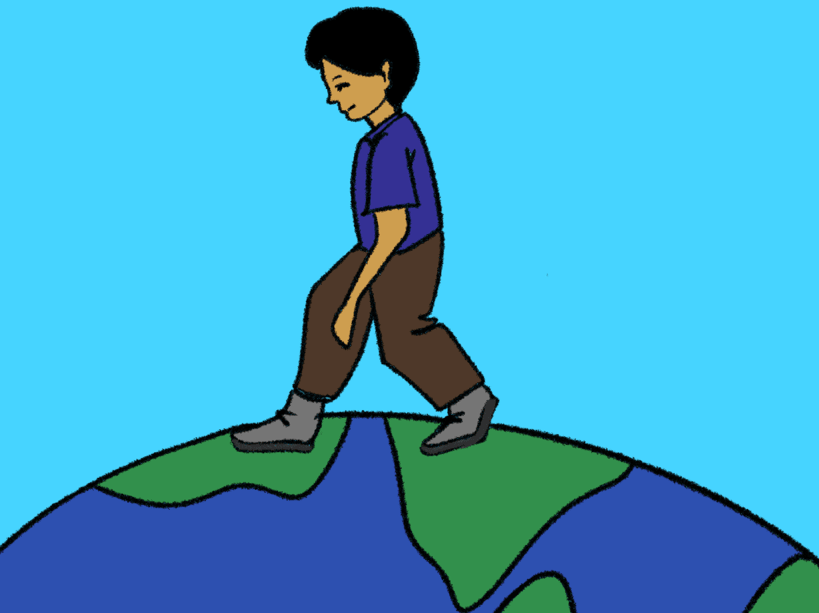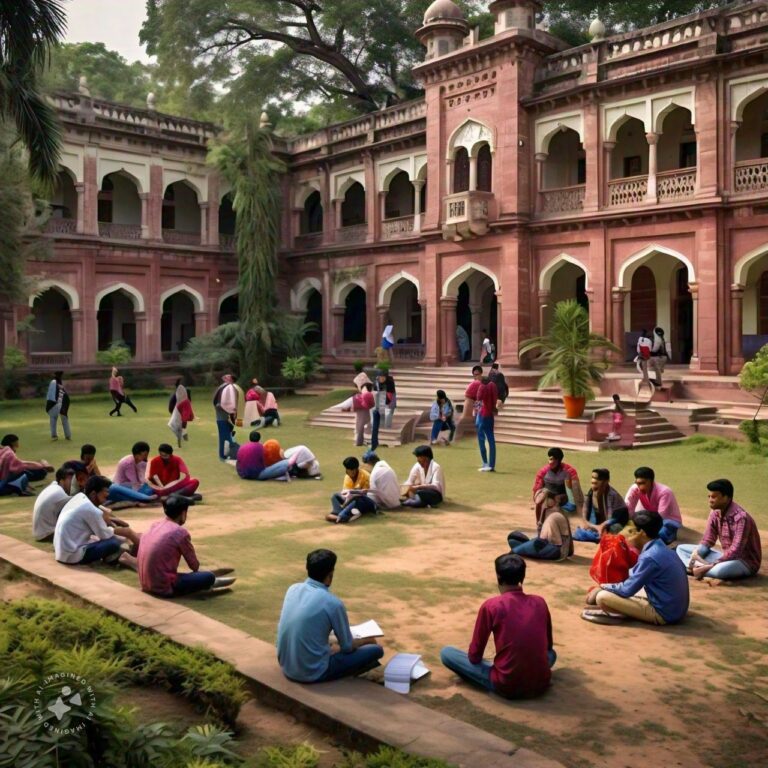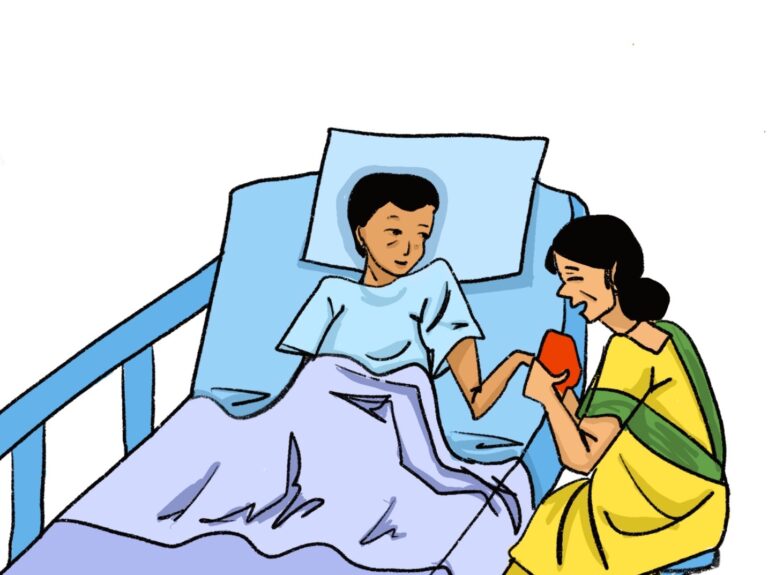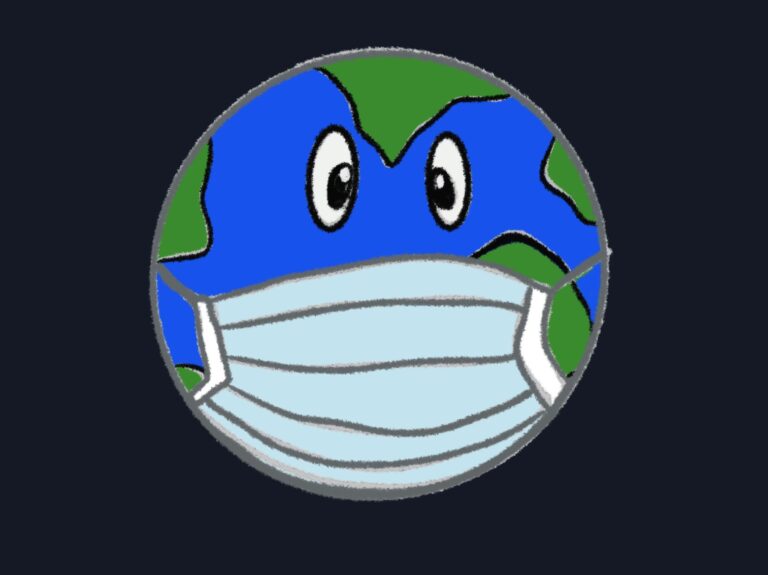The INDIA outside INDIA
Dr. Jayan is a ‘Contributing Writer’ at the journal.
The skies are open and so are the seas which flow freely without any distinguishing marks as boundaries which are man-made but the minute a step is taken or put in another country, the law comes into force and national legitimacy needs to be proved in terms of citizenship. The experience of crossing boundaries is indeed profound. As we cross the boundary lines, many things change and are easily noticeable, it catches the eye and a kaleidoscope of memories or fusions can merge and emerge simultaneously. This contrast between natural openness and human-imposed divisions is a rich topic for contemplation, reflecting our world’s unity and diversity.
India prides itself on being a land of unity and diversity. It is rather an ethnological museum not in name but in reality. In any of our metros, there is a myriad of languages spoken sometimes confusing, confounding and mesmerising at the same time to the ear throughout the year irrespective of the season you have chosen to travel or the legitimate reason you have for stepping into a city whether it is Bengaluru, Kolkata, Mumbai or New Delhi. I had lived in Sharjah and worked in Dubai for 10 years in the earlier phase of my teaching career. In October 1997, my mother, sister, and brother-in-law accompanied me to the then-HAL Airport in Bangalore. As the Indian Airlines took off, my mother’s face was the mirror on the wall but the excitement of being on a plane was indescribable or inexpressible. The connecting Emirates flight from the Mumbai flight was barely two and a half hours before I stepped out of my motherland into another land called the United Arab Emirates.
I was under the impression that Arabic would be the only language spoken in the land of Arabs and as soon as my school bus (The Westminster School, Dubai) took me to Sharjah through the amazingly organised straight streets my heart missed the hustle and bustle and the horns, the twists and turns of Indian roads along with the absence of the yellow-green or yellow black Indian auto rickshaw. It was baffling to my eye but impeccable in sight as the luxurious cars of the sheikhs passed by in style. Still, the Marutis and Fiats were not in sight but were very much in my heart. The India I knew seemed distant but was very much close. The first restaurant I entered with my future school colleague Jayakumar had one of my countrymen greeting me ‘Cheta’ which means brother in Malayalam. So far but so close! There were only a few people who were not having the parotta chicken/beef curry which is the most popular dish next to the rice and fish curry in Kerala. I was surprised to see Afghans, Pakistanis and Indians sitting around a table enjoying our dishes. It’s a small World but beautiful too! My mind echoed these words.
As the new year dawned, I was fortunate to ride in an autorickshaw when the Global Village in Dubai opened. The queue was long and winding, quite different from India, where an autorickshaw driver usually smiles at you and is welcoming but often charges more! It was a poignant reminder of the beauty in our interconnected world—a sentiment that echoed in my mind as I embarked on my brief explorations. In the far corner of my lonely consciousness, the green canopy of trees, the hanging drumsticks, mangoes and jackfruits outside the Kerala houses sparkled but did not fade. Reminiscences can act as reminders and remain sharp sometimes.
As I took my first stroll the following day with a Pepsi in hand which i bought for one dirham (it was eventually my first purchase outside India), the melodic cadence of various Indian languages and the familiar terms of endearment—’bhai (brother),’ ‘bhavi (sister in law)’, ‘chechi (elder sister),’ ‘bhaijan (brother),’ and others—resounded around me, easing the ache of missing my mother while I suppressed those yearnings and longings with a determined spirit as alternatives were not a choice but something to be forgotten at that point of time.
In this vibrant tapestry of cultures and languages, India’s unity in diversity shines brightly, a testament to the rich shade that binds us all together in this small yet beautiful world. I walked into Karachi Darbar the next week and the Pakistani waiter asked me the first question: Would you like to have a Kerala Lunch? The waiter could see the glow on my face! After my first salary which came on the 10th of November 1997, the penchant for shopping set in and I decided to buy my first watch on a Friday evening as the weekend mood had set in, my choice was naturally the Titan among the many options which caught my eye. A Tata product across the Arabian Sea! The line of Indian restaurants across the length and breadth of the gulf is countless.
Next, Singapore has always impressed me because of its fast-paced progress and global acceptance. In May 2013, I was taking an evening stroll with my wife, children, and brother-in-law. I suddenly came across a monument in Esplanade Park which is the INA (Indian National Army) memorial. During the Second World War and the period preceding India’s independence, a brave cohort of Indian soldiers, who were prisoners of war, formed the INA under Capt. Mohan Singh’s leadership. Subsequently, the leadership of this group transitioned to the legendary Netaji Subhash Chandra Bose, who famously raised the slogan “Dilli Chalo” and established the first provisional government of India (Azad Hind) outside the country. The monument was built to commemorate the ‘Unknown Warrior’ of the INA with the words Unity, Faith and Sacrifice. Decades later, the monument is a testament to the heroic deeds and the indomitable spirit of the Indian soldier in pursuit of independence and freedom from the clutches of colonial brutality and domination.
This summer I was vacationing with my family in Sri Lanka and we were heading towards Colombo from Galle. The streets were similar to the Indian Western coast dotted with the vast green cover of trees where sunlight weaves through the verdant lace and was just amazed by its mesmerising beauty throughout the drive. As I dozed off and got up, I noticed the abbreviation SLTB ( SriLankan Transport Board) but the buses were red, slightly more of a darker shade than our KSRTC buses in the states of Karnataka and Kerala but one difference and one commonality caught my senses. Most of the buses were Ashok Leyland in red but it read Lanka Ashok Leyland. An Indian connect as I continued to collect my thoughts in Ravana’s Sri Lanka!
Last June, as my feet were touching the soft sands of the beaches of Krabi which is made up of 140 islands in Thailand, I glanced at the sunset enjoying the exquisite colours and radiance. Later I realised that these islands were facing the Andaman Sea named after our Andaman and Nicobar islands. The Indian Ocean is the smallest but the only one named after a country. India! A voyage towards the southernmost parts of the world is mostly through the Indian Ocean south of India. It’s not a story but a reality.
The land called India was plundered and looted by the British and they took away our prized possessions- the Kohinoor. It’s part of our colonial legacy and the British loot but the world knows that the Kohinoor was found in the Golconda mines of Andhra Pradesh once. Though it passed through a long list of greedy and selfish emperors, the place of origin will and has always been India.
The recent T-20 World Cup held in the West Indies(WI) and USA will remain etched in the hearts of a billion Indians but when the South African batsmen faced the bowler of the opposite teams, the name AMUL was imprinted on their national jersey which was greenish-yellow. Amul which says ‘The Taste of India’ has transcended the borders of the Republic of India! The story does not end here. Nandini, a Karnataka public sector undertaking, sponsored the Scottish national cricket team.
Only a decade back, TATA acquired Jaguar, regarded as the most lucrative automobile market. Tata’s total turnover in 2024 was 11.12 lakh crore and Tata Motors exported cars to more than 30 countries across the Middle East, South America, South and SouthEast Asia, Australia and Africa. Its journey in Africa goes back to 1964 with exports to Sudan first and has sold over 1,50,000 vehicles across the continent.
In June 2023, upon arriving at O R Tambo Airport in Johannesburg, I was promptly taken to a shopping centre housing a restaurant named ‘The Taste of Bombay’. It was intriguing to find an Indian restaurant serving authentic Indian delicacies on the African continent. Johannesburg and Durban have rich Indian cultural influences, especially in their cuisine. Durban is particularly famous for its vibrant Indian community and delicious Indian food. It’s known as one of the largest Indian cities outside of India. With aromatic biryanis, and perhaps even some South African-Indian fusion dishes, there’s always something exciting to try for the visitor and the South African.
Beyond this, it was on 7th June 1893 in Pietermaritzburg that a young Indian lawyer was thrown out of the train despite having a legitimate ticket. The Pietermaritzburg railway station commemorates this event on the 7th of June every year. The lawyer went on to stay in South Africa for 21 years having changed the destinies of both South Africa and India decades later. Today there are over 70 countries which have statues of the lawyer and crusader – Mohandas Karmchand Gandhi who the world knows as ‘ The Mahatma’. The Gandhian concept of Satyagraha took shape in South Africa which was later incorporated on a massive scale in India during the different phases of the freedom struggle from the 1920s.
Nelson Mandela remarked, “The Mahatma is an integral part of our history because it is here that he first experimented with truth; here that he demonstrated his characteristic firmness in pursuit of justice; here that he developed Satyagraha as a philosophy and method of struggle.”
The Indian diaspora in Africa extends far beyond South Africa, encompassing islands like Mauritius and Seychelles as well. In 1901, during his journey to India, Mahatma Gandhi made a brief stopover in Mauritius, where he urged the local Indians to seek political empowerment. March 12th marks the National Day of Mauritius, coinciding with the commencement of Gandhi’s Salt March in 1930, when he embarked on the journey from the Sabarmati Ashram to Dandi. Half a million indentured Indians were brought from India during the British rule between 1834 and 1900s. Today PIOs (People of Indian origin) comprise nearly seventy percent of the island’s population. The story of indentured labourers brought from India as part of British colonial policies also reached the island of Seychelles, where Hinduism is the second most practised religion today and it has become a vital ingredient in the melting pot of the island’s vibrant multiculturalism.
Regarding Indian culinary cuisines, Indian prawns are primarily exported to the United States, China and Southeast Asian countries -Thailand, Vietnam and Malaysia. Indian marine exports amounted to 6.34 billion between April 2023 and January 2024. The mouthwatering dishes of jalebi and gulab jamuns to the spicy crunch of the samosas and pakoras are a treat to any passerby in the busy bylanes of most Asian or North American streets. Not to forget the masala of the Indian Masala Dosa which is an evening snack with the hot chai (tea) or kappi (coffee) sitting by the side of the plate.
The curvaceous folds of the masala dosa along with the tinge of brownish colour on the top of the crispy bite is a much sought-after dish in most cities across the world in the evenings. The 30 million-strong Indian population outside the borders of India do carry the bonds and heritage which have been transmitted over the ages and generations. Standing at 2717 feet high, the tallest building in the world, Burj Khalifa adorns the Indian flag colours on the Indian Republic Day (26th January) and so does Times Square in New York. The countless flags which are seen across the stadiums when Indian cricket comes out to bat or bowl speak loud of the vibrant Indian presence beyond India. Indian spices and spice products are perhaps available in most corners of the world. Indian spice exports stood at an astounding 3.67 billion dollars in 2023-24. The chillies, cardamon, pepper, turmeric, and ginger which can be found in most supermarkets outside India are mostly from India.
On October 2, 2019, marking Mahatma Gandhi’s 150th birth anniversary, India gifted the United Nations 193 solar panels, symbolizing one for each of its 193 member states. Valued at $1 million, this donation supports the UN’s Sustainability Goals, underscoring the critical importance of addressing climate change locally and globally.
I love seeing this video because it never fades away from my mind though it happened in 1984, in the last year of my schooling. Wing Commander Rakesh Sharma who was the first Indian in space, on board the Soviet spacecraft was asked by then Prime Minister Indira Gandhi in Hindi – Bharat kaisa dikh raha hai (How is our Bharat from space?) and he replied ‘Sara Jaha se Acha Hindustan Hamara!’ That’s our Bharat! Our India!
One of the greatest American novelists Mark Twain remarked “ India is the cradle of the human race, the birthplace of human speech, the mother of history, the grandmother of legend and the great grandmother of tradition. Our most valuable and most instructive materials in the history of man are treasured up in India only”
References
- PM Modi inaugurates Gandhi Solar Park with 193 solar panels (2020) Hindustan Times. Available at: https://www.hindustantimes.com/india-news/pm-modi-inaugurates-gandhi-solar-park-with-193-solar-panels/story-HokHy8er7SmBklVnp3UMdI.html (Accessed: 18 July 2024).
- Dutta, A. (2021) An evening with Netaji’s general, Medium. Available at: https://medium.com/@thecricketwriter/23rd-august-1945-singapore-787b10adfbe1 (Accessed: 16 July 2024).
- Dwivedi, G. (2023) 3 crore Indians living overseas, data shows favourite countries are…, NDTV.com. Available at: https://www.ndtv.com/india-news/record-surge-in-illegal-us-entries-nearly-97-000-indians-apprehended-in-2022-23-as-overseas-indian-population-tops-3-crore-unpacking-nri-and-pio-globa-4553099 (Accessed: 18 July 2024).
- Jagota, M. (2024a) Financialexpress, India eyes Rs 1 tln marine exports in 2 years – Economy News | The Financial Express. Available at: https://www.financialexpress.com/policy/economy-india-eyes-rs-1-trillion-marine-exports-in-2-yearsnbsp-3445357/ (Accessed: 14 July 2024).
- PM Modi inaugurates Gandhi Solar Park with 193 solar panels (2020) Hindustan Times. Available at: https://www.hindustantimes.com/india-news/pm-modi-inaugurates-gandhi-solar-park-with-193-solar-panels/story-HokHy8er7SmBklVnp3UMdI.html (Accessed: 18 July 2024).
- Tata Motors: Agile, new-age & future-ready (2024) Tata Motors – Largest Automobile Manufacturer, Biggest Automobile Company in India. Available at: https://www.tatamotors.com/organisation/our-history/ (Accessed: 18 July 2024).
- Indian Spices, Spices Manufacturers and Exporters in India – IBEF. (n.d.). India Brand Equity Foundation. Retrieved July 22, 2024 from https://www.ibef.org/exports/spice-industry-india.








